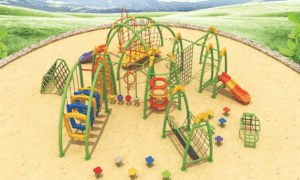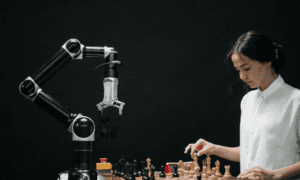LED light strips have become a favoured choice for modern lighting, adding style and versatility to homes, offices, and other spaces. Whether used for accent lighting, task lighting, or purely decorative purposes, these flexible light strips are a great way to enhance the atmosphere of a room. However, safety is still an essential concern here, as with any electrical installation. Ensuring that LED strip lights are installed and operated correctly is crucial to avoid issues like overheating, fire hazards, or electrical malfunctions.
In this article, we’ll explore the important safety considerations you need to keep in mind when working with LED strips, including proper installation methods, potential fire risks, and how to maximize their energy efficiency. From understanding the right power supply to ensuring your strip lights are installed correctly, we’ll cover everything you need to know to enjoy the benefits of LED strip lighting without any worries.
Overview of LED strip lights
LED strip lights, also known as LED tape lights or light strips, are thin, flexible circuit boards fitted with tiny LED bulbs. These strips are often used to create ambient lighting in various settings, from under-cabinet lighting in kitchens to accent lighting in living rooms and even outdoor areas. Their versatility allows users to easily bend and shape them to fit unique spaces, making them an excellent solution for a wide range of lighting projects.
One of the prime advantages of LED strip lights is their energy efficiency. Compared to traditional incandescent bulbs, LED lights consume significantly less electricity while still providing bright, vibrant illumination. This makes them an environmentally friendly option for homeowners and businesses alike, contributing to both cost savings and lower energy consumption. Moreover, LED strip lighting operates at a lower temperature than other types of bulbs, making them safer for indoor use and reducing the risk of overheating.
In addition to their practical benefits, LED strips offer customizable features, such as different colour temperatures, adjustable brightness, and even colour-changing options. Many modern LED strip lights are fully compatible with various smart-home systems like Google Home, allowing users to easily control their lighting through voice commands or mobile apps. Whether you’re working on a new project or upgrading an existing space, LED strip lights provide a flexible and energy-efficient lighting solution.
Also Read : Resistors
Installation and power supply safety
While LED strip lights offer numerous benefits, proper installation is crucial to ensuring their safe operation. Improper installation can lead to electrical issues, fire hazards, or a shortened lifespan of your LED strips. To avoid these risks, it’s important to follow a few key guidelines.
First, make sure that the power supply you use is compatible with the length and brightness of your LED strip lights. Each LED strip has specific power requirements, and using an inadequate or mismatched power source can lead to overheating or even a fire. When selecting a power supply, always check the voltage and current ratings, ensuring they match the specifications of the LED strip. If you’re unsure, consult the manufacturer’s guidelines or seek help from a qualified electrician.
Next, the way you secure the LED strips during installation can have a major impact on safety. Most LED tape lights come with a self-adhesive backing, which makes them easy to mount on walls, ceilings, or under cabinets. However, it’s essential to ensure that the surface is free of dust and clean before applying the adhesive. For added security, especially in areas where the adhesive might wear off, consider using additional mounting clips or channels to prevent the LED strip from coming loose.
Handling wires and connectors properly is another critical aspect of safe installation. Ensure that all electrical connections are insulated and secure, reducing the chance of shorts or exposed wires. Additionally, avoid cutting or sharply bending the LED strips, as this can damage the circuit and cause electrical malfunctions. Always use appropriate connectors and follow the manufacturer’s recommendations for handling the strips.
Fire hazards and how to avoid them
While LED strip lights are generally considered safe due to their lower temperature operation, there are still potential risks if they are not installed correctly. The most serious of these risks is the possibility of a fire hazard, which can occur due to overheating, improper wiring, or inadequate power management.
One of the main reasons LED strip lights can pose a fire risk is the incorrect use of the power supply. If the power source is not matched to the voltage and current requirements of the LED strips, the strips can draw too much current, leading to overheating. This is especially true if the strips are installed in enclosed spaces with poor ventilation, where heat can build up more quickly. For example, placing LED strips behind heavy curtains or near flammable materials like clothing can increase the risk of a fire. Always ensure that the LED strip lights have adequate ventilation and are kept away from materials that can easily catch fire.
Another common mistake is using LED strip lighting that is not designed for the environment where it’s installed. For example, using non-waterproof strips in a humid bathroom or kitchen can lead to electrical issues. When installing strip lighting in areas prone to moisture, it’s important to use waterproof-rated LED strips and ensure that all electrical connections are sealed to prevent contact with water.
To avoid fire hazards, it’s also essential to regularly inspect the condition of your LED strip lights after installation. Over time, the adhesive on the self-adhesive backing may weaken, causing the strip to detach from its mounting surface and potentially expose electrical components. Additionally, wires can become damaged or frayed, increasing the risk of overheating or short circuits. If you spot any signs of wear and tear, replace or repair the affected components immediately.
Lastly, always choose UL-listed LED strips and power supplies, as these products have been tested for safety and meet strict standards for electrical safety. By taking these precautions, you can significantly reduce the chances of a fire and ensure that your LED strip lighting remains safe for use in your home or office.
Energy efficiency and temperature control
One of the primary reasons why LED light strips are so popular is their energy efficiency. LED lights consume much less energy while producing the same or even greater levels of brightness, compared to traditional incandescent or fluorescent bulbs. This makes them an ideal solution for projects that require ambient lighting or long hours of operation without significantly increasing your energy bills.
LED strip lights are also designed to operate at much cooler temperatures than older lighting options. LEDs stay relatively cool even after hours of use because they convert almost all the electricity they consume into light, rather than heat. This lower temperature makes them safer and contributes to their energy efficiency. In contrast, incandescent bulbs release a large amount of energy as heat, which can increase the risk of fire and cause discomfort in enclosed spaces.
The colour temperature of LED strip lighting can also play a role in both safety and comfort. LEDs are available in a wide range of colour temperatures, from warm white to cool white and even full-colour spectrum options. Choosing the right colour temperature for your project can help create the desired atmosphere while ensuring that the lights remain brighter without producing excessive heat. Warmer lights are often used for relaxing spaces like bedrooms, while cooler lights are more suitable for workspaces or kitchens.
When selecting LED strips for your next new project, consider both the brightness and temperature requirements of the space. If you’re lighting a small, enclosed area, lower-power LEDs might be sufficient, whereas larger spaces may require brighter and more powerful strips. By considering these factors, you can maximize the energy efficiency of your strip lighting while ensuring it operates safely and effectively.
Additional safety tips for LED strips
To further enhance the safety of your LED strip light installation, there are a few additional tips to keep in mind. First, make sure you pick the right LED strips for the specific needs of your project. This includes paying attention to the length of the strips, the total brightness, and the power supply requirements. Using strips that are too long or too bright for the power source can cause overheating, so it’s important to measure the space and calculate the power needs accurately.
Next, regular maintenance is crucial for keeping your LED strips in good condition. Over time, the wires, connectors, and self-adhesive backing may wear out, increasing the risk of a fire hazard or malfunction. Periodically check your installation to ensure that everything is secure and that there are no signs of damage or overheating. If you notice any issues, such as flickering lights or unusual heat, it may be time to replace or repair the affected components.
In areas where moisture is a concern, such as kitchens, bathrooms, or outdoor spaces, be sure to use waterproof LED strip lights. These strips are designed to withstand exposure to water and humidity, reducing the risk of electrical shorts or fire hazards. Additionally, if you’re installing LED strips in rooms with high humidity or temperature fluctuations, search for products specifically rated for those environments.
Finally, when working with LED strips, avoid overloading electrical circuits. If you’re installing multiple strips in one room, make sure the total power draw is within the safe limits of your electrical system. Overloading circuits can increase the risk of fire by overheating the lights. Consider consulting a professional electrician if you have doubts about the power needs of your installation.
Conclusion
LED strip lights offer a wide range of benefits, from energy efficiency to versatile design options, making them an excellent choice for lighting projects in any space. However, ensuring the safety of your installation is critical to avoiding potential fire hazards and electrical issues. By following best practices for installation, choosing the right power supply, and regularly maintaining your LED strip lighting, you can enjoy the many advantages of these lights without worrying about safety concerns.
Whether you’re adding accent lighting to a living room or upgrading the ambient lighting in your office, LED strips provide a lower temperature, energy-efficient, and customizable solution. With the right precautions in place, they can brighten your space while keeping your home or workplace safe.
Finally, be sure to select UL-listed products when purchasing LED strip lights. This certification ensures that the LED strips meet industry standards and have been thoroughly tested for safety. Using UL-listed products greatly reduces the risk of electrical issues or fire hazards, giving you peace of mind when installing LED lights in your home or office.
If you follow these guidelines, you can safely enjoy the benefits of LED strip lighting while minimizing potential risks.



































